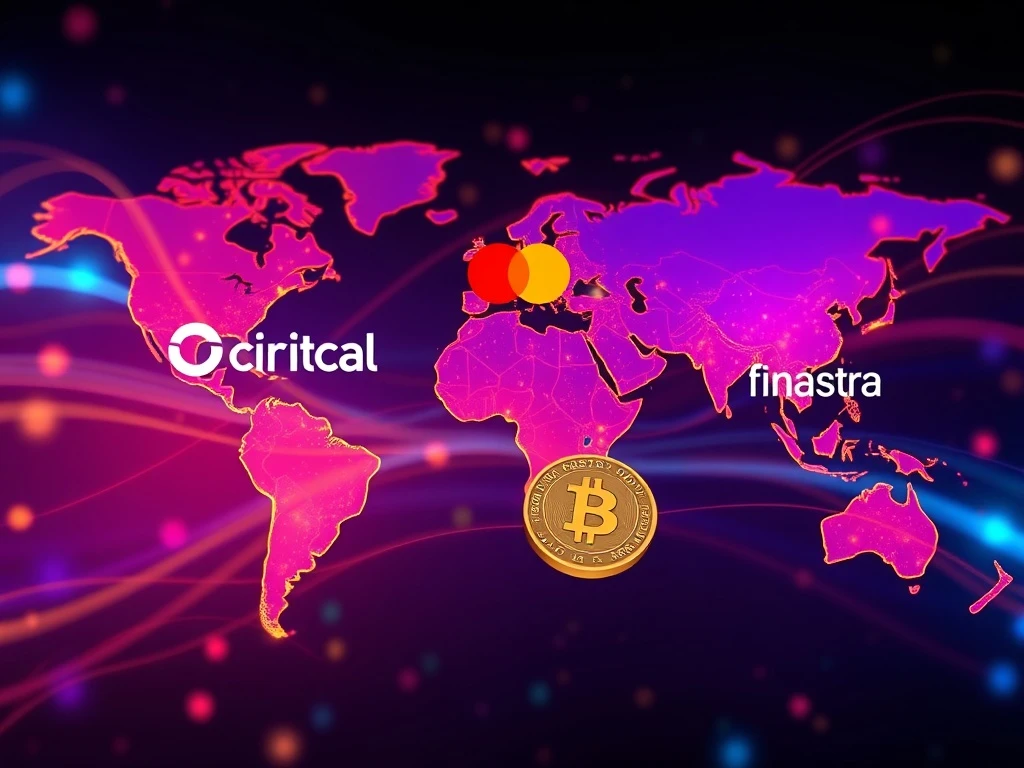Circle Propels USDC: Unlocking Global Payments and Revolutionizing Cross-Border Transactions

The landscape of global finance is rapidly evolving. Specifically, Circle, a leading financial technology firm, is making significant strides. It aims to embed its USD Coin (USDC) deeper into mainstream financial systems. This strategic push promises to transform global payments, particularly for those engaged in the cryptocurrency space. Recent partnerships highlight this ambitious vision. These collaborations could redefine how businesses and individuals conduct international transactions.
Circle’s Strategic Push for Global Payments
Circle recently announced two pivotal partnerships. These agreements aim to integrate stablecoin settlement into traditional finance. Firstly, a new deal with Mastercard will significantly expand USDC’s utility. Mastercard confirmed on Wednesday its plan to enable acquirers and merchants. This applies specifically to Eastern Europe, the Middle East, and Africa (EEMEA). These entities will settle transactions using USDC and Euro Coin (EURC). Arab Financial Services and Eazy Financial Services will be the initial adopters. This marks a first for stablecoin settlement via Mastercard in the region. This development offers a robust new payment rail for international commerce.
Furthermore, Finastra, a London-based financial software provider, also unveiled a major integration. On the same day, Finastra announced USDC integration into its Global PAYplus platform. This platform reportedly processes over $5 trillion in cross-border transactions daily. Consequently, banks in 50 countries will gain the ability to settle international payments in USDC. This remains true even when original payment instructions are denominated in fiat currencies. This innovative approach simplifies complex foreign exchange processes. It provides greater efficiency and speed for banks worldwide.
USDC: A Game Changer for Cross-Border Transactions
The integration of USDC into these vast networks offers several key advantages. It provides a more efficient alternative to traditional banking rails. Firstly, transaction speeds can increase dramatically. Traditional international transfers often take days. USDC settlements can occur in minutes. Secondly, costs typically decrease. Legacy systems involve multiple intermediaries and associated fees. Stablecoin transactions streamline this process. Thirdly, transparency improves. Blockchain technology offers an immutable record of all transactions. Therefore, businesses can track payments with greater clarity. These benefits are particularly appealing for companies operating across diverse international markets. They seek faster, cheaper, and more reliable payment solutions.
Driving Stablecoin Adoption Worldwide
Circle’s commitment to global adoption is clear. Its efforts gained significant momentum following the passage of the GENIUS Act in the U.S. Congress. This landmark legislation, signed into law in July, established the first federal framework for stablecoins in the country. This provided much-needed regulatory clarity. Such clarity often encourages broader institutional engagement. Moreover, Circle has been actively forging other strategic alliances to expand its reach.
For instance, on July 31, Circle announced a partnership with OKX. OKX stands as one of the world’s largest crypto exchanges. It boasts a strong presence across Asia, the Middle East, and Europe. This collaboration introduced zero-fee USDC conversions to US dollars. This move significantly expanded the stablecoin’s global liquidity reach. It made USDC more attractive to traders in key international markets. This partnership underscores Circle’s strategy to enhance accessibility and reduce friction for users globally.
Expanding Circle’s Influence in Asia
In August, Circle strategically turned its focus to the vibrant Asian market. Its executives held meetings with the CEOs of South Korea’s four largest banks. These included KB Kookmin, Shinhan, Hana, and Woori. The discussions explored potential on-chain integrations. They also investigated the possibility of issuing a won-backed stablecoin. This initiative demonstrates Circle’s proactive approach. It aims to tailor its offerings to specific regional demands. Furthermore, the company joined SBI Group, Ripple, and Startale in a joint venture. This collaboration seeks to promote USDC adoption in Japan. It also aims to develop a tokenized asset trading platform for real-world assets. These ventures solidify Circle’s position as a key player in the digital asset ecosystem.
The Future of Digital Currency with Mastercard and Finastra
The integration of USDC with major players like Mastercard and Finastra marks a pivotal moment. It signifies a growing acceptance of digital currencies in traditional finance. This collaboration is not merely about facilitating payments. Instead, it represents a foundational shift. It builds a bridge between the innovative world of stablecoins and established financial infrastructure. Consequently, businesses and consumers could experience seamless, instantaneous international transactions. This vision aligns with the evolving demands of a globalized economy. As digital currencies mature, their role in everyday commerce will undoubtedly expand. Circle, through these strategic partnerships, positions USDC at the forefront of this transformation. This ultimately fosters a more interconnected and efficient global financial system.









